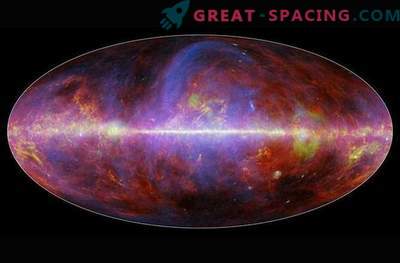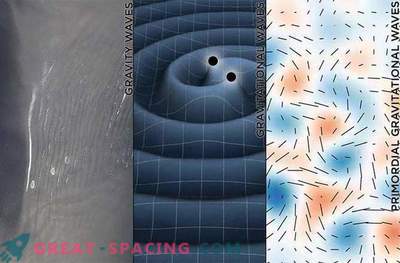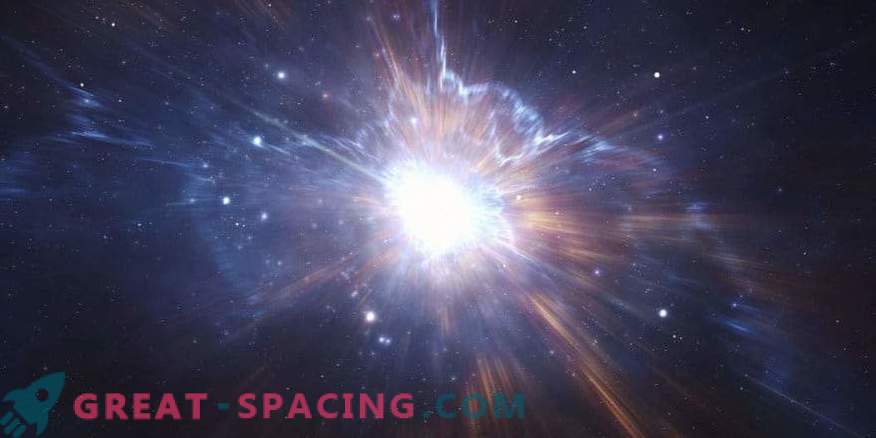
On March 17, 2014, astronomers announced a historic discovery. Having left a deep imprint in relic radiation, which permeates the entire Universe and was created at the dawn of time, gravitational waves were under direct observation, giving us the opportunity to look into the very nature of the inflation period, which implies a rapid growth of our Universe immediately after the Big Bang.
The search for additional data in favor of the theory of cosmic inflation should have been a sufficient discovery, but the fact that astronomers now have evidence in favor of the existence of gravitational waves makes this St. Patrick's Day a special day for cosmology.
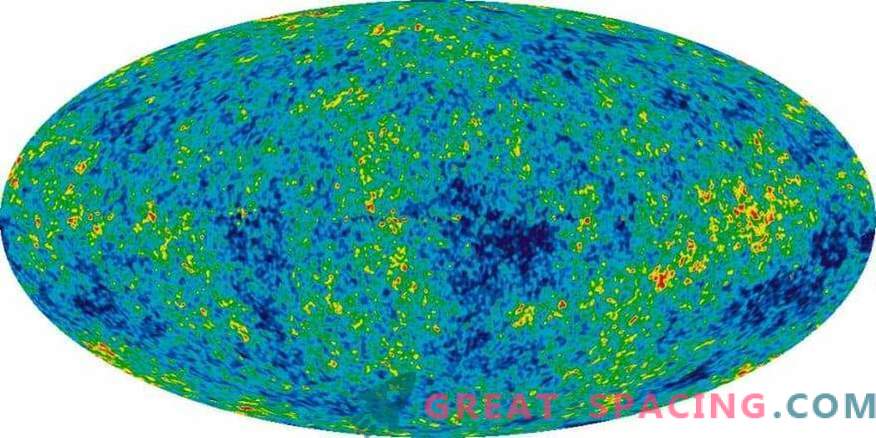
Picture of the “childish” universe. The map displays WMAP microwave background temperatures. Hot spots - red, and cold - blue.
So what is it, gravitational waves? They can be represented as ripples in space-time, which generate massive movements of the movement through space. Imagine that you threw the ball into the pool. The ripples created by hitting the ball against water will spread from the point of impact in different directions. Gravitational waves act in the same way, but, unlike ripples on the surface of water, gravitational waves propagate at the speed of light through three-dimensional space. The equation of the theory of general relativity by Albert Einstein predicted their existence. In addition, there were some indirect observations of gravitational waves that flush orbital energy from binary stellar systems. Since we are space-time objects, we must also be able to detect their presence as they pass through local space-time. Multimillion-dollar experiments, such as the laser interferometer of the observatory gravity waves (LIGO) in Louisiana and Washington, were built to directly detect gravitational waves propagating through the Earth. However, their discovery has so far proved to be dismally illusive.

The Big Bang Theory: The singularity is a starting point, followed by expansion.
Cosmic microwave background or CMB is a famous big bang artifact. Representing “Echo” about the creation of the Universe, these minor temperature fluctuations, which are observed at the furthest edge of the visible Universe, were studied using space telescopes such as NASA Wilkinson Microwave Anisotropy Probe (WMAP) and the Planck Observatory in Europe. These observatories specially measure small temperature perturbations (known as anisotropies) in the CMB and study information about the conditions immediately after the Big Bang and can even find out the age of the Universe. The fast inflationary period assumes that our Universe has expanded one billion trillion times in a fraction of a second. Amazingly, this is any quantum-sized disturbance that existed at that time, bloated overnight, and astronomers assume that these tiny structures can be observed today, in the form of huge gravitational disturbances. But before using the BICEP2 project, scientists assumed that these waves are too weak to be detected. It turns out that they were wrong.
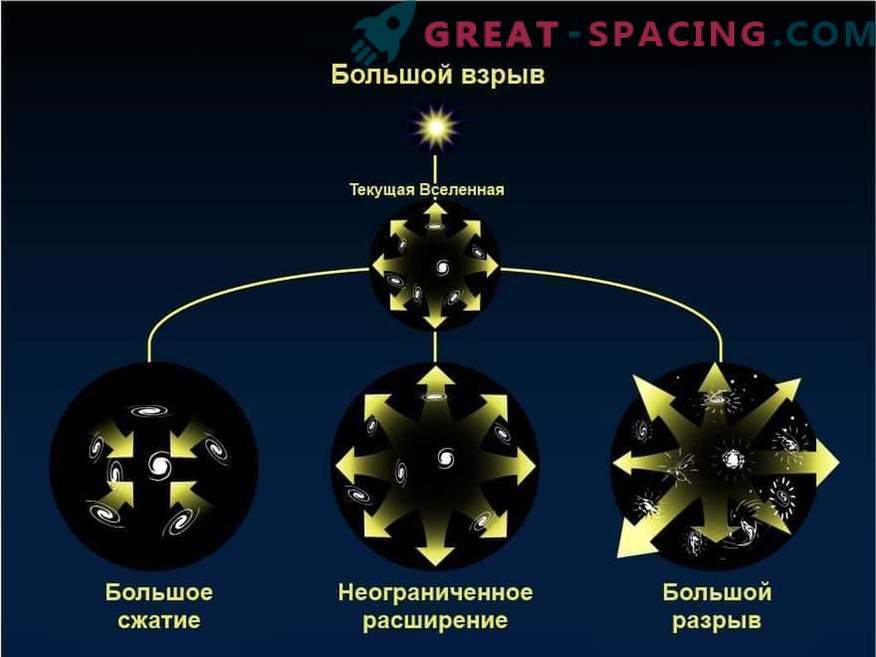
Possible options for the end of the universe
“It was how to find a needle in a haystack, but instead we found scrap,” said BICEP2 project officer Clem Prike, from the University of Minnesota.
"The implications of this finding are mind-boggling," said project coordinator Jamie Bock, a physicist at the California Institute of Technology and the Jet Propulsion Laboratory (JPL). "We measure the signal that comes from time immemorial."
Located in the arid atmospheric conditions of Antarctica, BICEP2 has a very clear view of space. The device has the ability to measure the polarization of a weak signal from the background radiation. On Earth, sunlight can become polarized if it is reflected from a mirror or when it is filtered using polarized sunglasses (thus reducing glare). Radiation from ancient relic radiation can also become polarized, and gravitational waves have the ability to manipulate the polarization of the incident radiation. The specific type of polarization known as “B-polarization mode” is what BICEP2 was looking for. And now, with a high degree of certainty, astronomers have discovered it.
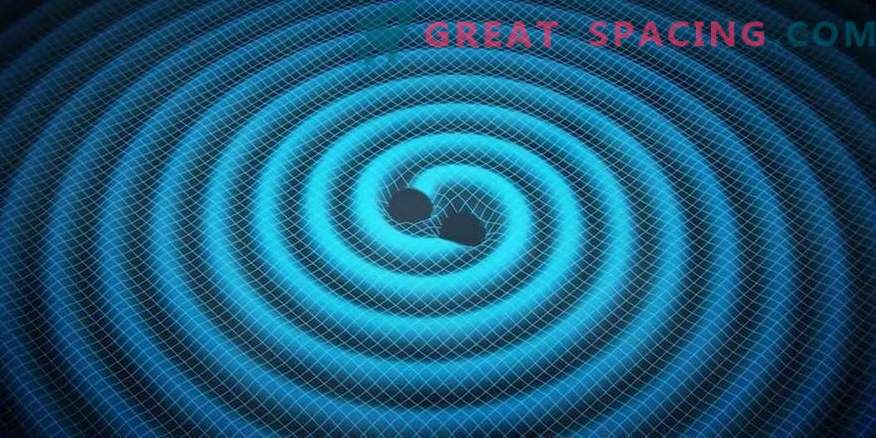
"The vortex pattern of polarization in B - mode is a unique signature of gravitational waves," says Chao -Ling Guo, one of the project leaders, from Stanford University and the National Accelerator Laboratory.
Today's announcement is being touted as the “discovery of the century” and although the two documents that were published today will only go to print, it is safe to say that astronomers “hit the bull's eye”. Not only do these results confirm the theory of cosmic inflation and indicate the presence of gravitational waves, they can be associated with one of the most difficult problems in modern quantum physics, namely, what role does gravity play in the quantum world.
